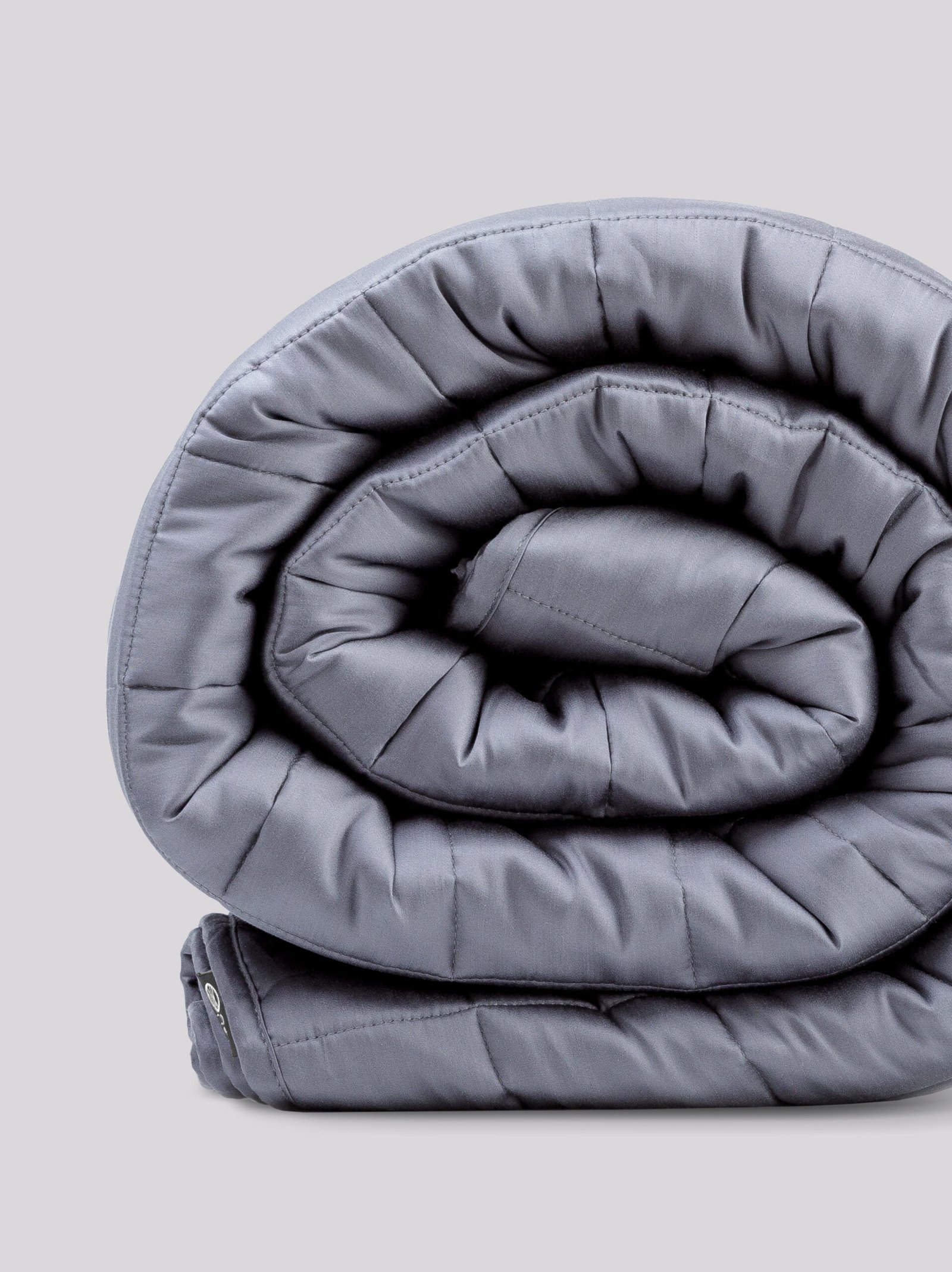What Does Your Sleeping Position Say About Your Health?

Founder of the NOXNOX brand, psychologist
The way you sleep says more about your health than you might think! Your preferred sleeping position can influence your spinal alignment, breathing, and even how well-rested you feel in the morning. While there’s a popular idea that sleep positions reveal personality traits, the science is strongest when it comes to how they affect your body. Do you favor sleeping on your back, side, or stomach? Let’s explore what your position might mean for your health.
Professor Chris Normund from the University of Illinois in the USA, also the director of the Sleep Evaluation and Consulting Service, says that most people do not change their sleeping position throughout their lives. Only 5% of respondents say that they sleep in a different position every night.
According to the latest research data, more than half of Lithuanians complain of sleep disorders, and around 15% of the world’s population struggles with chronic insomnia. (according to the American Academy of Sleep Medicine).
Did you know that one of the main factors affecting the quality of your night’s rest is your sleeping position?
On the back, stomach or side. Which of these positions is best for our spine and how to sleep correctly so that the body can relax and rest properly?
Let’s take a closer look at this.
Sleeping positions and our health
Sleep is an opportunity for the body and mind to regenerate and cleanse itself of toxins and negative thoughts. The recommended duration of sleep (for an adult) is about 8 hours per day. So that we wake up in the morning refreshed, ready for new activities, full of energy. But sleep time is not the only important thing. The place where we sleep, the noise level, the air temperature, the type of mattress, the quality of the blanket and the position of the body are also important.
And what do sleeping positions mean?
On the side, on the stomach, on the back, on a high or low pillow – these are sleeping positions that we choose because they are comfortable for us or because we are used to them. It is also often influenced by genetic predisposition.
It’s interesting! It has been scientifically proven that many people sleep in a similar position to their parents.
Important! If you wake up at night or in the morning with neck pain, numbness in your hands or muscle cramps, this is a sign that your sleeping position is not good.
The wrong sleeping position can cause headaches, chronic fatigue, excessive muscle tension, nightmares and even contribute to the deepening of wrinkles and gastrointestinal disorders.
And in which body position is it recommended or not recommended to sleep?
The most popular sleeping positions
Let’s discuss in more detail the most popular sleeping positions and how they affect our body, well-being and health.
Sleeping on the stomach
In this position, the neck and lumbar region are unnaturally rotated, which can lead to neck, shoulder and headache pain. In order to avoid this, and to make sure that our spine does not hurt when we wake up in the morning, we should abandon the sleeping position on our stomach.
It is also important to mention that such a pose is very harmful to our beauty. When we sleep on our stomach, our face is covered with a pillow, so it is difficult for oxygen to reach the lungs and it affects the skin badly.
Lying on your stomach also compresses your internal organs, which can lead to indigestion (e.g. reflux, heartburn). Also, this position is often accompanied by placing the hands under the head, as a result of which they are numb when they wake up. And one of the legs raised higher leads to an incorrect alignment of the pelvis and the lower part of the spine.
However, if you cannot get rid of sleeping on your stomach, it is recommended to sleep on a low pillow or without one, and place an extra pillow under your pelvis. This will help straighten the spine.
Sleeping on your back
According to doctors, this lying position is the best and healthiest sleeping position for the spine because it relaxes all the joints and muscles. Body weight is evenly distributed on the bed, there is no pressure on internal organs, blood circulates freely in the body. This position is the most favorable for relaxation and regeneration of the body. Unfortunately, this situation is not convenient for everyone.
We must agree that sleeping on your back relaxes your spine and neck and relaxes your muscles. Thanks to it, we can straighten our legs and arms. The head is pointed upwards, which makes it easier to breathe. We do not pressurize internal organs and cause body numbness.
However, this position is not recommended for people suffering from sleep apnea. Because in this position, they can snore very loudly and sleep with their mouths open.
Sleeping on your back is usually one of the causes of sleep apnea, i.e. i.e. leading to sudden respiratory arrest or shallow breathing, which can lead to hypoxia.
However, sleeping on your back is great for people who suffer from back and neck pain. This position of the body and placing the arms along the torso will relax the neck muscles.
Sleeping on your back will also help women suffering from premenstrual syndrome. Lying on your back will reduce pressure on your stomach and breasts. To help yourself even more, it’s a good idea to place a pillow under your knees to elevate your lower spine and reduce pain.
Embryo pose
Almost half of us like to fall asleep in the so-called fetal position, i.e. i.e. the kind where we curl our legs and bend our spine. Unfortunately, this sleeping position is not healthy.
This can cause leg cramps and numbness, as well as pain and even curvature of the spine. This position also causes compression of the internal organs (including the lungs), resulting in hypoxia.
Sleeping on Your Side: Benefits and Tips
Side sleeping is one of the most popular positions, and for good reason! It can promote spinal health, reduce snoring, and improve circulation. Here’s how to optimize your side sleeping:
- Pillow Support: Choose a pillow that keeps your head aligned with your spine, not too high or low.
- Legs and Hips: A pillow between your knees will further support your spine and reduce lower back pressure.
- Arm Placement: Keep your arms slightly bent at the elbows.
Left Side Bonus: Research suggests sleeping on your left side may have additional benefits for digestion and heart health.
Lying straight like firewood
Malka is a body position that involves lying on your side with your arms along your body and your legs straight. This may look like the pose of a person who is tied up, but in reality the sleeping person is extremely relaxed.
People who sleep this way are described as very sociable – they like to talk to different people, they are very trusting of others (sometimes they can appear a bit naive) and they like to be the center of attention.
A pleading pose
If you sleep on your side with both arms outstretched in front of you (like a mummy), you are very open, but can be suspicious and cynical. Those who sleep in the supplicating position are unable to make difficult decisions and have a hard time weighing the pros and cons.
Soldier pose
This is a lying position, when the arms are along the body. When sleeping in this position, people tend to live only for themselves, behave quietly and restrained. This means they don’t make a fuss about themselves, but they have very high expectations for themselves and others. People who sleep in this position are recommended to turn on their side to prevent snoring and reduce the risk of sleep apnea.
Parachutist sleep pose
This is a position when you lie on your stomach, often wrap your hands around a pillow, and turn your head to the side. These individuals tend to be open and sociable. Sometimes they can be considered rude. Outwardly playful, they often hide anxiety – they don’t like criticism or extreme situations.
Starfish pose
This is the most unpopular of all sleeping positions, often called starfish. As the name suggests, you lie on your back with your legs outstretched and your hands behind your head. Starfish are very loyal friends. They always have time to listen to others and are always ready to help others. They generally do not like to be the center of attention.
Sleeping as a couple
It is worth knowing that when sleeping as a couple, different positions can also determine the characteristics of your relationship.
Spoon pose
Only about a fifth of couples, about 18 percent. sleeps in this position, according to research by relationship psychologist Corrine Sweet.
This pose shows that one of the partners (by hugging) takes a protective attitude towards the other person. Such a situation seems cute – one person is always “surrounded” by another.
But, paradoxically, this pose is a sign of trust, as if the person being hugged is saying, “I trust you.” This pose is very intimate and sexy.
A loose spoon
People who have recently become a couple usually have the most physical contact with each other in bed. But as soon as their relationship starts to mature, sharing the same bed is no longer so attractive.
Therefore, sleep in the loose spoon pose (The Loose Spoon) is a typical position of newlywed couples.
In this pose, the big spoon sends a message to the little one: “I’m behind you, you can trust me.” However, the loose spoon is no longer as sexy and intimate as in the first case.
The chase
Chase pose is somewhat similar to spoon pose. Well, almost… The difference is that in this position, one person is always looking for the other because the first person sleeps on the opposite side of the bed. Therefore, the second always “catches and chases” the first. This can mean two things: first, the stalker wants to be caught or is pretending to be hard to reach, or the stalker is deliberately withdrawing because they need space all to themselves.
Braid pose
Very few couples choose to sleep in such an extremely sexy position. Most often, this position is used by couples whose emotions are very intense (for example, when a couple has just finished making love) or couples who are at the beginning of a romantic relationship. Interestingly, some couples sleep in this position throughout their relationship, but this is not necessarily a good thing. According to New York psychotherapist Elizabeth Flynn Campbell, , this can mean that partners are too dependent on each other to sleep separately, which is worrying.
Untied knot
This sleep pose (The Unraveling Knot) begins with a entanglement that “unties” after about 10 minutes.
As hard as it is to believe, but this sleeping position is a sign of a stronger relationship than entanglement. But only eight percent of couples stick to this two-piece pose. Dr. Sweet said it’s: “A trade-off between intimacy and independence that allows for the best of both worlds.”
Independent lovers
If you sleep with your partner on opposite sides of the bed with your backs facing each other, there is nothing to worry about. It’s just good.
According to relationship psychologist Corrine Sweet, couples who sleep on their backs and don’t touch each other feel safe. This position shows that there is independence and intimacy in the relationship. It is worth noting that this is one of the most popular sleeping positions for couples. About 27% of couples sleep in this position.
Back to back
If you sleep with your backs to each other, that’s fine too. According to dr. Sweet means that “Partners are relaxed and feel safe with each other.” This is the most common sleeping position among newlyweds (especially couples who have been in a relationship for less than a year).
On the chest
This is such a sweet position where one partner rests their head on the other’s chest and their legs are intertwined. It is extremely popular among newlyweds and couples who have rekindled their love.
It is a very nurturing situation that creates a great sense of security. Psychologist and war therapist Shirley Glass also explains that this position is “a sign of high trust between two people.”
Feet together
If your partner touches your legs with his feet, it’s usually a sign that he’s constantly wanting to be emotionally or sexually connected to you, says Patti Wood.
This position is also a sign that you cannot live without each other, even when you sleep. “Your lives are so intertwined, you care about each other, probably when one of you starts a sentence, the other one finishes it,” concludes Wood.
Seizure of territory
If you’re sleeping in bed with a territory grabber (The Space Hog), it’s time to have a heart-to-heart…
Such a person who takes up the entire bed is the truest egoist. For a person who absolutely dominates the bed space while sleeping, the partner is secondary, – believes Corrine Sweet – and nobody wants to play second fiddle.
What should you pay attention to? It is worth looking at the position of the heads. If the partners lie next to each other with their heads, then there is equality in the relationship. If they touch, it’s even better. This means that they are good around each other. Well, people who sleep higher and closer to the headboard compared to their partner are more dominant and more self-confident. People who feel inferior, are submissive and have lower self-esteem, usually sleep lower than their partner.
Adapted from Elyse Wanshel’s book What Your Sleeping Position Says About Your Relationship With Your Partner.
Sleeping position during pregnancy
During the first trimester of pregnancy and the first half of the second trimester, the expectant mother can safely fall asleep in any comfortable position. When going to sleep, she can lie on her back or on her side to the right or left side.
She also doesn’t have to worry if sleeping on her stomach used to be her favorite position. When the pregnant belly is still small, the pregnant woman can calmly continue her previous habits. The situation changes slightly at the end of the second and third trimester. When the belly is big, it may not be as comfortable to fall asleep as in the beginning of pregnancy or even impossible due to the size of the belly. Then, when going to sleep, the pregnant woman should choose one of the sides.
It is a common belief among expectant mothers that pregnant women should only sleep on their left side. It turns out that there are no such approved recommendations of doctors. But the truth is that the aorta runs along the spine and slightly to the right. When lying on the right side, the pregnant uterus can compress the inferior vena cava. It can interfere with blood circulation. However, if the pregnant woman feels well, then there are no contraindications to not sleeping on the right side.
Mother Nature designed the female body in such a way that the expectant mother will feel when it will be uncomfortable for her to fall asleep in a certain position.
The most important thing to follow is the rule that the expectant mother should get a good night’s sleep. Unfortunately, this is not always the case. Pregnant women can suffer from various ailments that prevent them from sleeping peacefully.
It happens that they suffer from painful night cramps, restless legs syndrome, joint pains. A pregnant woman may also suffer from insomnia or frequent awakenings at night due to a full bladder. Therefore, it is worth doing everything to improve the comfort of sleep.
Preventive help can be a weighted blanket, which will not only soothe tired legs, but also allow you to fall asleep more calmly and quickly by pressing lightly.



